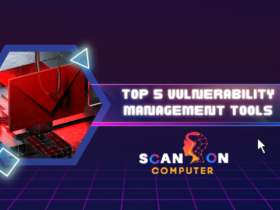Complete Guide to Endpoint Detection & Response (EDR)
Endpoint Detection and Response (EDR) is a cornerstone of enterprise cybersecurity, helping organizations defend endpoints like laptops, servers, and mobile devices from increasingly complex threats. Many business leaders and IT professionals begin their research by asking: “Is EDR software or hardware?” The answer is clear—EDR is modern cloud-based software, not hardware—designed to run on endpoints and provide end-to-end security coverage.
What Is EDR and How Does It Work?
EDR stands for Endpoint Detection and Response, and it refers to advanced software solutions installed on endpoint hardware (user devices like computers, servers, and mobile devices) to monitor, analyze, and respond to threats in real time. These lightweight software agents continually collect and analyze endpoint data, providing security teams with centralized dashboards to visualize and assess risk, detect malicious activity, and automate incident response.
Key EDR Features
- Continuous Monitoring: Modern EDR software tracks every endpoint’s behavior and logs all activity across the environment.
- Incident Response: EDR integrates automated actions and playbooks, including immediate containment, quarantine, or remediation of infected devices.
- Threat Hunting: Advanced analytics powered by AI and machine learning actively search for indicators of compromise (IoCs), empowering security teams to spot sophisticated attacks missed by legacy tools.
- Integration: EDR solutions often connect with SIEM, SOAR, and other security platforms for holistic protection and orchestration.
EDR Software vs Hardware
EDR is always software, not hardware—though it runs on physical devices, its core functionality relies on continuous software updates, cloud analytics, and flexible deployment. Unlike a hardware firewall, EDR can be deployed globally in minutes and adapts as new threats emerge.
| Factor | EDR Software | Hardware Firewall |
| Primary Function | Detect, respond, remediate threats | Filter/secure network traffic |
| Deployment | On endpoints, cloud managed | At network perimeter |
| Scalability | Highly scalable (cloud, remote, global) | Limited, physical infrastructure |
| Updates | Automatic (cloud/software) | Manual or scheduled hardware updates |
| Analytics | AI-driven, real-time | Basic, signature-based |
| Mobility | Supports remote workforces | Usually fixed, not endpoint-based |
EDR vs EPP (Endpoint Protection Platform)
Organizations often consider both EDR and EPP. While EPP delivers baseline protection against known threats using traditional antivirus and firewalls, EDR offers behavioral monitoring, analytics, and investigative capabilities for real-time detection and advanced responses.
| Feature | EPP | EDR |
| Protection Type | Signature-based, known malware | Behavioral, unknown threats |
| Incident Response | Limited remediation | Full containment & investigation |
| Visibility | Limited to detected malware | Deep activity logs, telemetry |
| Automation | Basic (scheduled scans) | Advanced (AI/ML powered) |
Core Benefits of EDR
- Real-Time Threat Detection: Catch both known and unknown threats as they unfold across global endpoints.
- Rapid Containment & Response: Quarantine endpoints, roll back changes, and automate incident playbooks to limit breach impact.
- Comprehensive Visibility: Aggregate data from all endpoints for holistic situational awareness, critical for digital forensics and compliance reporting.
- False Positive Reduction: AI-driven triage helps focus analyst time on real threats, minimizing alert fatigue and wasted resources.
Use Cases: EDR in Modern Enterprises
EDR is invaluable for industries facing strict compliance, remote workforce challenges, and evolving threat landscapes. Common use cases include:
- Protecting healthcare devices and patient data internationally
- Securing remote endpoints for global workforces
- Detecting ransomware before it spreads across networks
- Investigating insider threats via advanced behavioral analytics
Trends and Market Outlook
The global EDR market is projected to grow significantly through 2025 and beyond, driven by cloud adoption, remote work, and increasingly sophisticated attacks. Organizations worldwide are adopting EDR for unified endpoint protection, threat hunting, and automated response.
Must-Have EDR Solution Features
When evaluating EDR platforms, prioritize:
- Cloud-based management and scalability
- AI-powered analytics for threat hunting
- 24/7 managed services and incident response
- Seamless SIEM/SOAR integration
- Support for diverse devices (Windows, macOS, Linux, mobile)
Final Thoughts
EDR is a modern, software-based solution designed to keep every endpoint secure in today’s global, cloud-connected workplace. With AI-powered analytics, automated response, and broad integration capabilities, deploying EDR elevates your cybersecurity posture far beyond traditional hardware or antivirus approaches.













Leave a Reply
View Comments